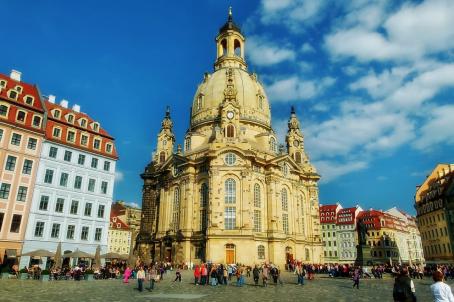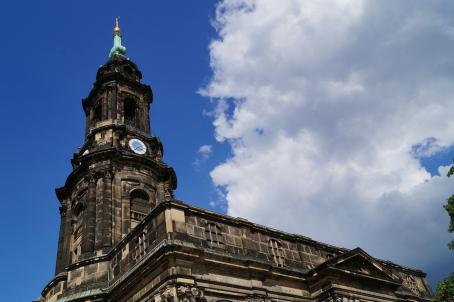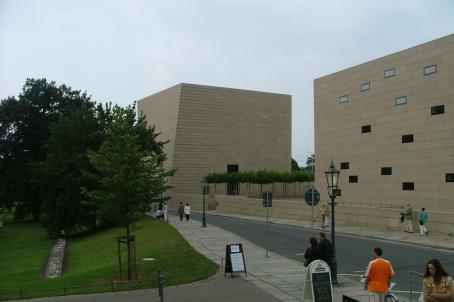Dresden Cathedral
The church of the Catholic Court in Dresden was built under the elector Friedrich August II of Saxony from 1739 to 1755 in the Baroque style. Severely damaged during the Second World War, the church was restored in 1962.
The church of the Catholic Court in Dresden was built under the elector Friedrich August II of Saxony from 1739 to 1755 in the Baroque style. Severely damaged during the Second World War, the church was restored in 1962.

The Dresden Frauenkirche is a baroque Protestant-Lutheran church, the main building of Dresden Neumarkt. Built from 1726 to 1743, it is considered the largest sandstone in the world. Severely damaged during the Second World War, the GDR kept the ruins intact as a memorial against the war. From 1994 to 2005, the church was completely rebuilt.

The Kreuzkirche is the Protestant main church of the city. First built in the 12th century, it is the largest church in Saxony and a music centre of the city. Destroyed five times in its history, most recently in World War II, the external reconstruction took place from 1946 to 1955, the internal, with its Art Nouveau elements, took place until today.

The Synagogue and community centre in Dresden are part of a modernist complex from 2001. The architects of the synagogue are Rena Wandel-Hoefer and Wolfgang Lorch. The main material of the building is concrete.